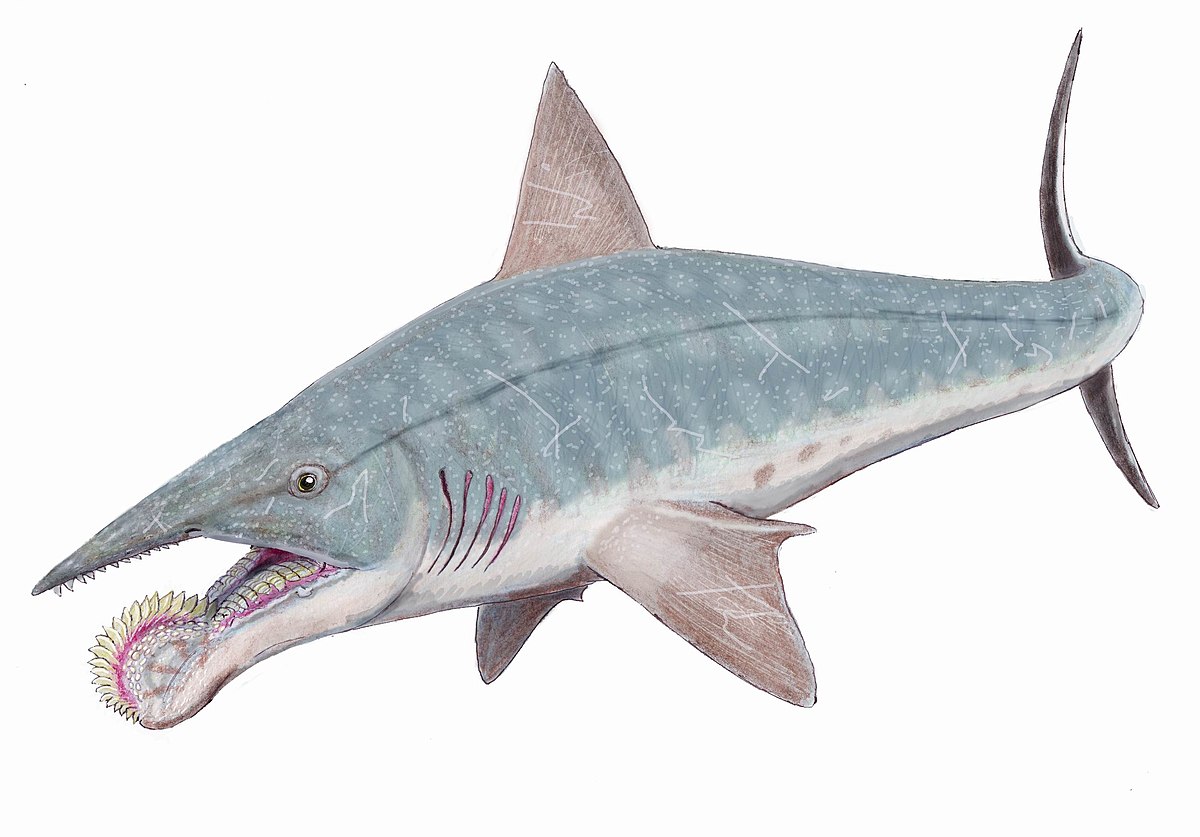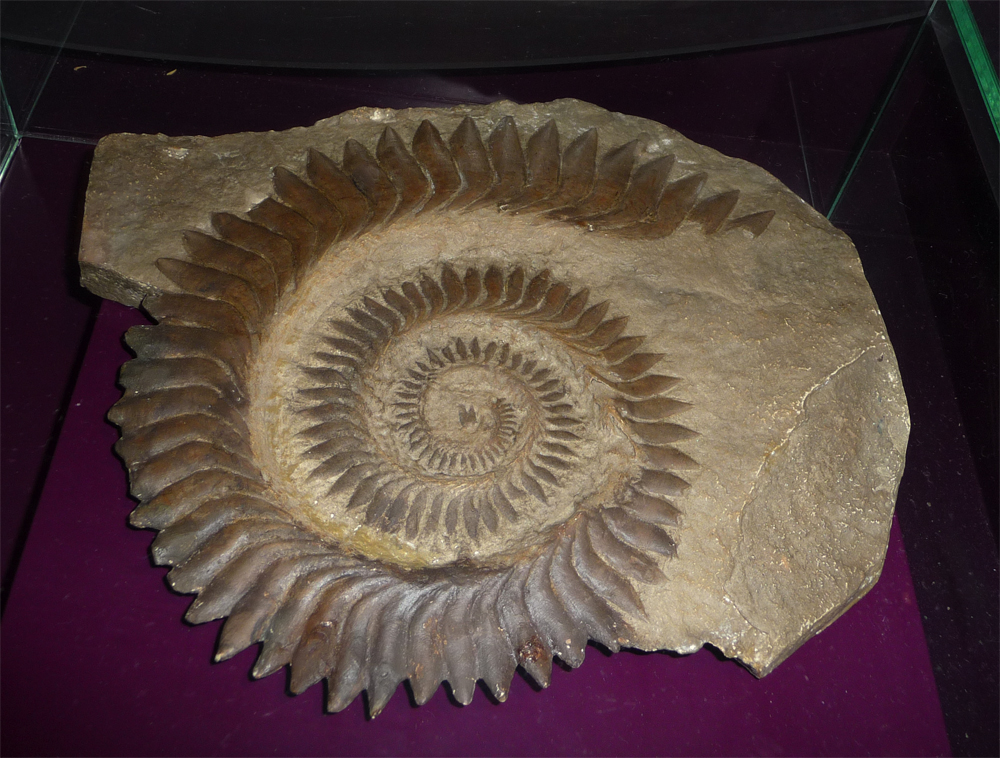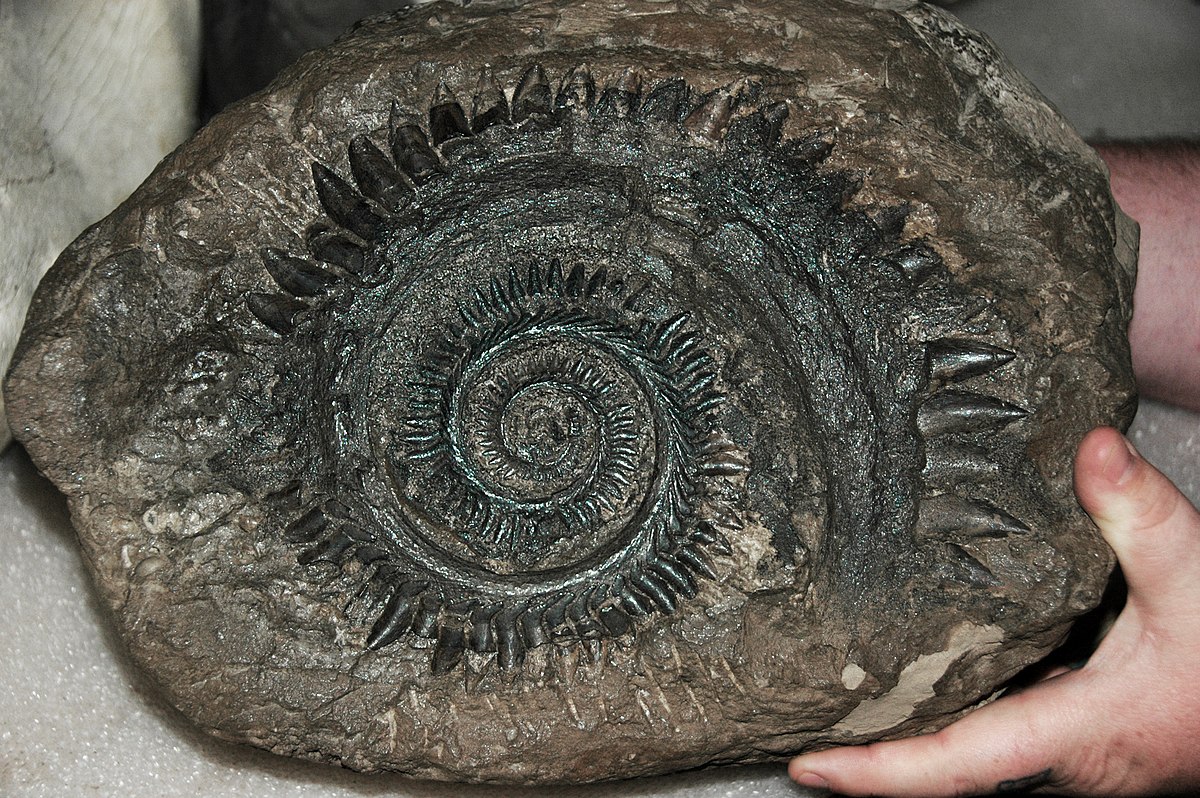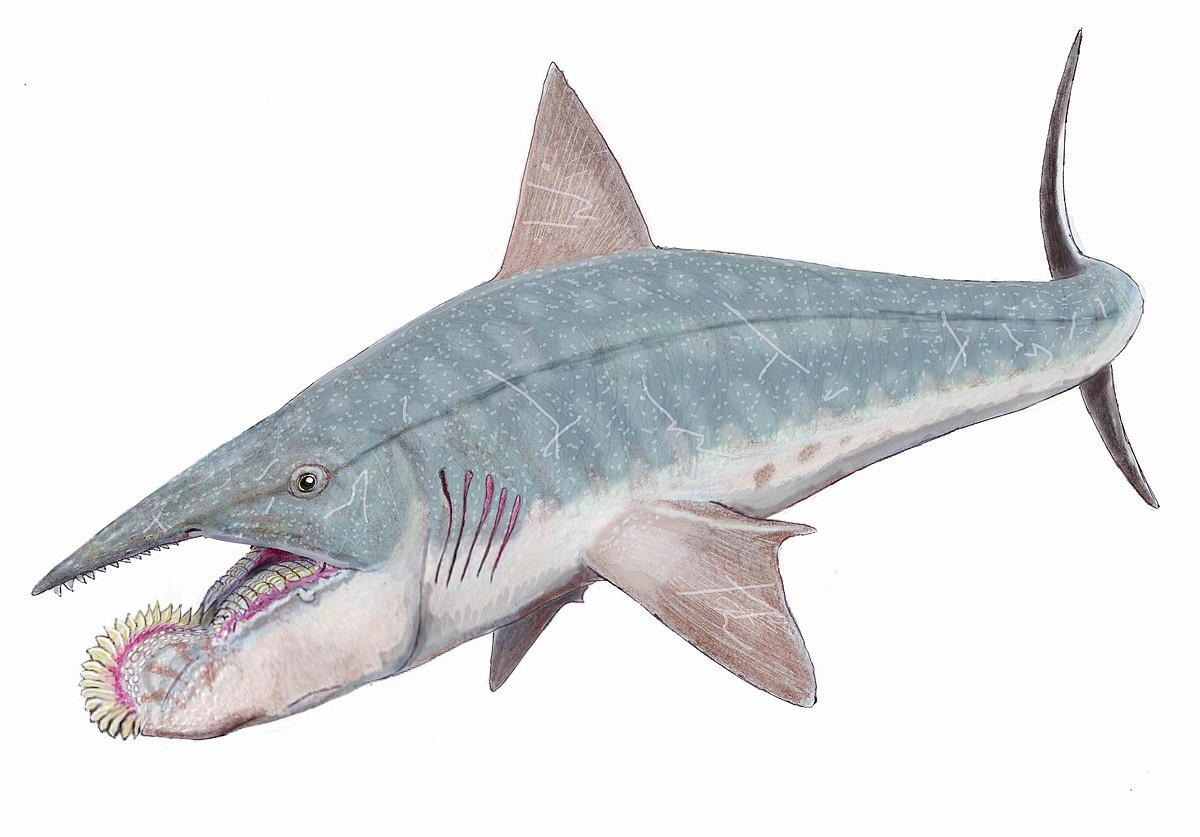It looks like you're using an Ad Blocker.
Please white-list or disable AboveTopSecret.com in your ad-blocking tool.
Thank you.
Some features of ATS will be disabled while you continue to use an ad-blocker.
11
share:

I just recently came across this beautiful monster, and a search shows it's only been briefly discussed on ATS about 10 years ago... so here it is again!
Helicoprion was a cartilaginous fish that lived about 20 million years ago, during the Permian period. Because they didn't have a skeletal structure in their bodies, and only cartilage, their bodies decomposed very quickly and it's been difficult to ascertain exactly what they looked like. The only part of them that preserved well is their conveyor belt of teeth, that looks like a circular saw. Scary and fascinating!
As the teeth broke off, new ones would grow in from behind; amazingly, it's still the same mechanism the sharks today use to replace their teeth. While our sharks don't have this circular belt of teeth and theirs line the ridge of their mouths, they still have rows and rows of teeth that move forward as they get damaged, or broken.
Here is what the fossils of the helicoprion teeth look like:


Like other chondrichthyan fish, Helicoprion and other eugeneodonts had skeletons made of cartilage. As a result, the entire body disintegrated once it began to decay, unless preserved by exceptional circumstances. This can make it difficult to draw precise conclusions on the full body appearance of Helicoprion. However, the body shape can be estimated via postcranial remains known from a few eugeneodonts. Eugeneodonts with preserved postcrania include the Pennsylvanian to Triassic-age caseodontoids Caseodus, Fadenia, and Romerodus.[4][5][6]
These taxa have a fusiform (streamlined, torpedo-shaped) body plan, with triangular pectoral fins. There is a single large and triangular dorsal fin without a fin spine, and a tall, forked caudal fin which externally appears to be homocercal (with two equally-sized lobes). This general body plan is shared by active, open-water predatory fish such as tuna, swordfish, and lamnid sharks.
Wiki Link with lots of info
So, they basically looked like sharks. The fins remain in the same places, the head is the pointy torpedo shape; perhaps it's upper jaw was sword like, as a swordfish has, with a row of its own teeth. (image at the top)
You can see a 3D interactive model of the Helicoprion right here.
And for those that were already afraid of sharks, I hope this doesn't give you new nightmares! I would absolutely LOVE to see one of these in motion... or hunting.

_____________
Edit to add: I think they got something wrong with the image at the top. It looks like they have the smallest teeth at the front of the jaw, while the largest are in the back of the mouth. The artist reversed the spiral. The end of the spiral, where the largest teeth are, should be at the front, where the jaw ends. The smaller teeth would be coming in from the back of the mouth, and the inside of the spiral would be lodged inside the jaw. But, from the first fossil image, it looks like the teeth get large as soon as they exit the jawline. A row of smaller teeth in the spiral, and then they suddenly get bigger. I think that's where they would exit the gums.
Also, it would need to have a much stronger lower jaw to support the pressure of the bite. I don't think that bendy jaw would do it. Here is my edit of the top image, with the teeth adjusted and the lower jaw made more tuna like.

edit on 9-12-2023 by Mahogani because: (no reason given)
a reply to: Mahogani
An Evolution like this is often directly targeted at some sort of Prey the Shark specializes in or Favors .
Question being what Prey requires this kind of Evolution .
And yes I hate Deep dark water I.E. the Ocean , We humans cannot breath under water and We Humans do not have Webbed Appendages for Swimming . Meaning we should keep our vulnerable selves out of the Ocean.
An Evolution like this is often directly targeted at some sort of Prey the Shark specializes in or Favors .
Question being what Prey requires this kind of Evolution .
And yes I hate Deep dark water I.E. the Ocean , We humans cannot breath under water and We Humans do not have Webbed Appendages for Swimming . Meaning we should keep our vulnerable selves out of the Ocean.
edit on 9-12-2023 by asabuvsobelow because: (no reason given)
Nope.
I loved the langoliers....it was great.
The ocean, nope.
I don't even like the videos i see at times of the ocean. If I can't see the bottom, it might as well be sulfuric acid. Not going in.
I loved the langoliers....it was great.
The ocean, nope.
I don't even like the videos i see at times of the ocean. If I can't see the bottom, it might as well be sulfuric acid. Not going in.
a reply to: theatreboy
I'm a fish. I've been a diver since early age, since around 14.
Water is my peace.
I'm a fish. I've been a diver since early age, since around 14.
Water is my peace.
(Spam removed)
edit on 10/12/2023 by ArMaP because: (no reason given)
Yikes! I looked T the 3-D model in the link you provided and it seems to have no other teeth. It's only got the bottom quarter mouth of a whole set. I
wonder when it bit something how that worked...
Never mind.. seems to have tiny top teeth. But it still does not appear to have them in any alignment...
Never mind.. seems to have tiny top teeth. But it still does not appear to have them in any alignment...
edit on 10-12-2023 by Cre8chaos79 because: I added some
new topics
-
Federal law trumps state and local law every time
Social Issues and Civil Unrest: 9 hours ago
top topics
-
Federal law trumps state and local law every time
Social Issues and Civil Unrest: 9 hours ago, 16 flags
active topics
-
Federal law trumps state and local law every time
Social Issues and Civil Unrest • 27 • : JadedGhost -
Well, here we go red lines crossed Biden gives the go ahead to use long range missiles
World War Three • 390 • : Freeborn -
Anyone like the Scorpions?
Music • 21 • : belkide -
Comcast dumping MSNBC
Mainstream News • 36 • : Kaiju666 -
Post A Funny (T&C Friendly) Pic Part IV: The LOL awakens!
General Chit Chat • 7831 • : DBCowboy -
DOJ Special Counsel Robert HUR Says JOE BIDEN Can Be ARRESTED After Jan 20th 2025.
Above Politics • 25 • : Kaiju666 -
-@TH3WH17ERABB17- -Q- ---TIME TO SHOW THE WORLD--- -Part- --44--
Dissecting Disinformation • 3380 • : RelSciHistItSufi -
Remember These Attacks When President Trump 2.0 Retribution-Justice Commences.
2024 Elections • 94 • : xuenchen -
I thought Trump was the existential threat?
World War Three • 77 • : EyeoftheHurricane -
The Acronym Game .. Pt.4
General Chit Chat • 993 • : JJproductions
11
